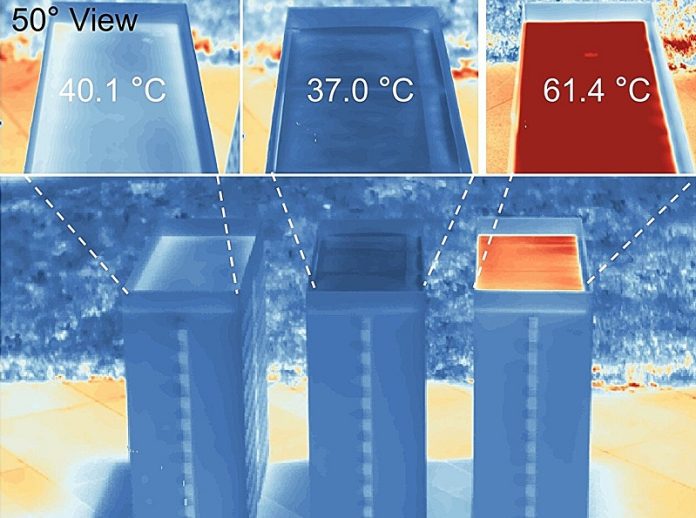
Imagine a future where your home stays cool in the summer without blasting the air conditioner—and your electricity bill is much lower.
Thanks to a breakthrough combining artificial intelligence and advanced materials science, that future might be closer than you think.
Scientists from The University of Texas at Austin, along with collaborators from Shanghai Jiao Tong University, the National University of Singapore, and Umea University in Sweden, have created new materials that can reflect sunlight and release heat in precise ways.
The research, recently published in Nature, used artificial intelligence to design these so-called “thermal meta-emitters”—materials that can help buildings, vehicles, clothing, and even spacecraft stay cool.
The team used machine learning, a form of AI, to develop more than 1,500 different material designs with unique ways of managing heat.
These materials don’t just reflect sunlight like regular white paint; they also emit heat in very specific wavelengths, allowing for much more effective temperature control.
To test their AI-driven method, the researchers made four sample materials and applied one of them to the roof of a model house.
They then compared it to roofs coated with standard white and gray paints. After four hours in direct midday sunlight, the roof with the new meta-emitter material was 5 to 20 degrees Celsius cooler than the others.
In hot places like Bangkok or Rio de Janeiro, this cooling power could save around 15,800 kilowatt-hours of electricity per year for an apartment building—about ten times the energy used by a typical air conditioning unit.
But the impact of this technology isn’t limited to buildings.
The researchers developed seven different types of thermal meta-emitters, each with their own strengths. In cities, these materials could reduce the “urban heat island” effect, where concrete and buildings trap heat, making cities much hotter than nearby rural areas.
In space, the materials could help regulate temperatures on spacecraft by reflecting sunlight and shedding heat in just the right way.
There’s even potential for use in everyday life. Clothing and tents made with meta-emitter fabric could offer better cooling in hot weather. Cars wrapped with these materials might not get as scorching on sunny days, reducing the need for powerful air conditioning.
Designing materials like these used to be a slow and tedious process, relying on trial and error. Previous automated methods couldn’t handle the complex 3D shapes needed for high performance. But with AI, researchers are now able to create smarter, more effective materials faster than ever.
This new machine learning approach could pave the way for energy-saving materials that are both practical and affordable—helping people stay cool and cut energy use at the same time.



